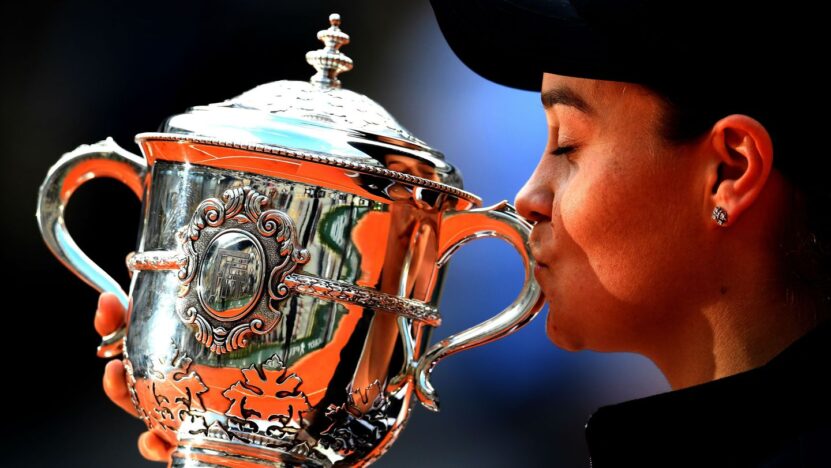The ATP Stands for the Association of Tennis Players. The WTA stand for the Womens Tennis Association. The two leagues are for men and women. Sometimes they have tournaments that cross over at the same time, date, and location and other times they have their own individual schedule. Sometime there is mixed doubles, but this form of tennis is rare in the professional game because the men’s and women’s tours are organized separately (by the ATP and WTA, respectively).
So What Are Some Key Differences in the ATP and WTA?
ATP Tournaments
This category itself has five types of tournaments such as
- ATP World Tour Finals
- ATP World Tour Masters 1000
- ATP World Tour 500
- ATP World Tour 250 Series and finally
- Challenger tournament (generally amateurs participate.)
Participants have something like a schedule season of ATP is similar to year season with first competitions at the beginning of January and last tournament in November. December is like a month off.
WTA Tournaments
The ranking points awarded to the winners of these tournaments are:
- “Premier Mandatory” 1000
- “Premier 5” 900
- “Premier” 470.
Four “Premier Mandatory” events in Indian Wells, Miami, Madrid, and Beijing with prize money of $4.5 million. Five “Premier 5” events in Doha, Rome, Cincinnati, Toronto/Montreal, and Wuhan with prize money of $2 million.Twelve “Premier” events with prize money of $600,000 to $1,000,000.
Tennis Ball Variation in WTA & ATP
Men and Women typically hit with the size ball. This also includes the pressure and the design. The ball of course varies from tournament to tournament depending on who sponsors it. The only difference is the ATP use an extra duty felt ball whereas the WTA uses a regular duty felt ball. The extra-duty felt tennis balls tend to slow the ball down while the regular-felt tennis ball tends to speed the game up to suit the game play.
Breakdown on ATP Prize Money vs. WTA Prize Money
2019 ATP Top Prize Earners
- Rafael Nadal: $16,349,586.
- Novak Djokovic: $13,372,355.
- Roger Federer: $8,716,975.
- Dominic Thiem: $8,000,223.
- Daniil Medvedev: $7,902,912.
- Stefanos Tsitsipas: $7,488,927.
- Alexander Zverev: $4,280,635.
- Matteo Berrettini: $3,439,783.
2019 WTA Top Prize Earners

- Ashleigh Barty: $11,307,587.
- Simona Halep: $6,962,442.
- Naomi Osaka: $6,788,282.
- Bianca Andreescu: $6,504,150.
- Elina Svitolina: $6,126,335. Karolina Pliskova: $5,138,077.
- Serena Williams: $4,310,515.
- Kiki Bertens: $4,208,026.
While the prize money gap is as close as it has ever been, the ATP still pays more to its players. It a lot of better than leagues like the WNBA or the WSL, but it is still not equal.
Race to The ATP and WTA Finals
ATP Nitto Finals
The top seven players in the ATP Race To London on Monday, 9 November 2020 (the day after the final tournament of the regular season, the Rolex Paris Masters) qualify for the Nitto ATP Finals. If there is one current-year Grand Slam champion positioned between eighth and 20th in the Race, he qualifies in eighth place. If there are two current-year Grand Slam champions positioned between eighth and 20th, the highest-ranked of those players becomes the eighth and final qualifier; the lower-ranked Grand Slam champion will serve as the alternate. If there are no current-year Grand Slam champions positioned between eighth and 20th, then the player in eighth place in the Race will claim the eighth and final berth.
WTA Finals

To qualify for the WTA Finals, WTA players compete throughout the year in over 53 WTA tournaments throughout the world, as well as the four Grand Slam events. The top 7 singles players (and usually top 8) on this leaderboard at the conclusion of the year (as of the Monday following the final regular season tournament) earn the right to compete in the WTA Championships. For singles, all results from that year count towards a player’s ranking.
Entry Protection vs Special Ranking Rule
Entry Protection shall be in effect for either the first nine tournaments (12 tournaments if out for longer than 12 months) that the player competes in using the Entry Protection (excluding wild cards and entries as a Direct Acceptance with his current position in the ATP Rankings) or for the period up to nine months beginning with the first tennis event that the player competes in, whichever occurs first.”
Special Ranking Rule, which allowed a player to freeze her ranking in the event of injury, illness, or pregnancy, required a player be out of competition for a minimum of 6 months and return to play within 3 years. A returning player could then use her special ranking for 8 tournaments to be completed within 1 year, though their special ranking could not be used for seeding purposes. A player who is out of competition for one year or more may use her special ranking for up to 12 tournaments in a one-year period.

